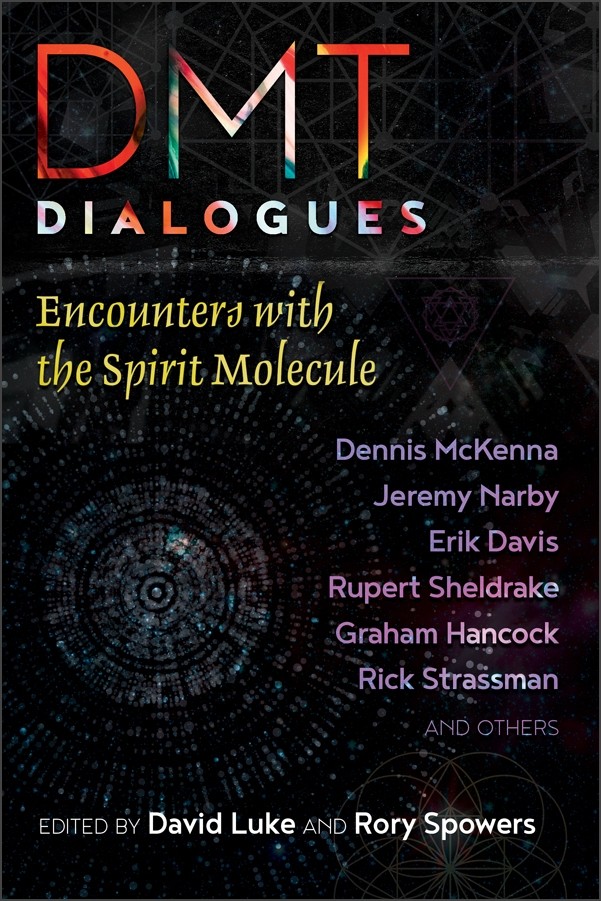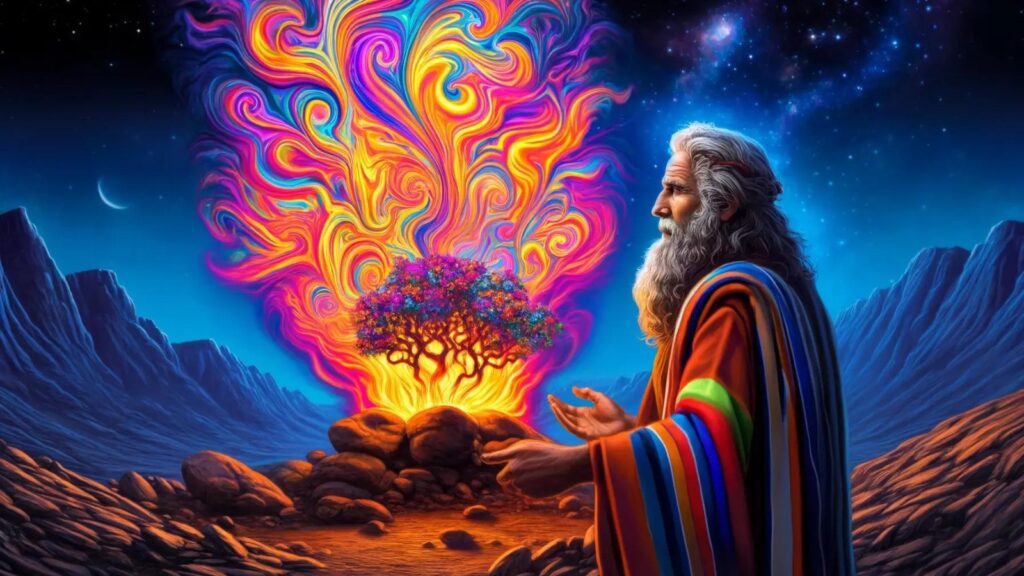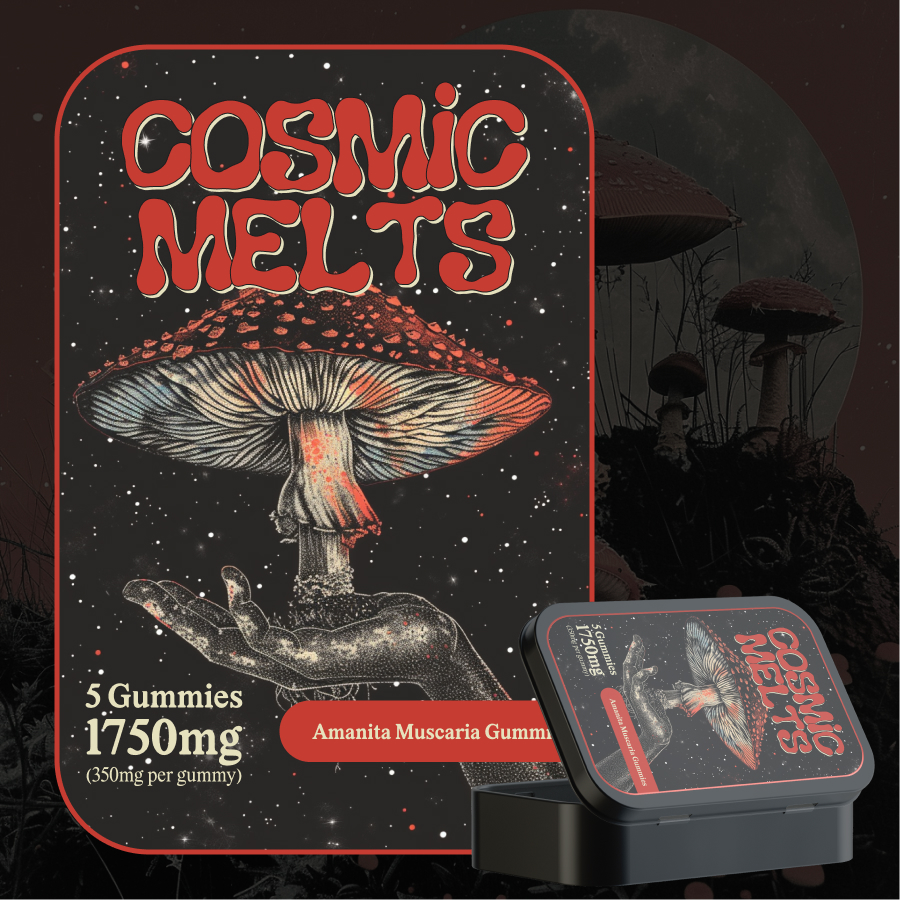The following on invisible and DMT entities is excerpted from DMT Dialogues: Encounters with the Spirit Molecule, a series of transcribed discussions of DMT experiences and plant sentience from leading luminaries in the field of psychedelic research, published by Inner Traditions.
Jeremy Narby
Yesterday Dennis [McKenna] talked about many interesting things. I like to quibble. I think that dialogue and exchanging points of view is the way to go. One of the things you said yesterday that I would quibble with is that DMT is often independent of cultural context. I know what you mean when you say that: it means that people from different cultures who are naive and uninformed about the experience report very similar experiences, so therefore we think it’s independent of cultural context. Well, yes and no. What I’m going to say today is why culture matters.
There are cultures in the Amazon where people have been taking plants, extracts, or snuffs that contain DMT for generations. So they’ve accumulated knowledge about how to do it and about the entities that they encounter, and this knowledge is then accumulated in their culture. Surely this is one of the things that distinguishes humans from other species—even though one should be suspicious of lists of things that distinguish us from other species. Nevertheless, we are the cultural animals; we are the ones who accumulate knowledge outside of our biology, through our culture. It’s given us a tremendous advantage over other species, but that would be another subject.
Anthropologists always argue that culture is important. It’s like the way scientists always conclude that more research is needed, because more research is always needed. It’s almost a tautology, but it remains, let’s say, a useful tautology. “Culture matters” is a useful tautology.
Before describing what I think has been established about what Amazonian people think about invisible entities, I’d just like to position myself as an observer, and as an agnostic. And I’d like to say what that means: it means that I know that I don’t know about final causes. This is not indifference. We talked about this with David [Luke] yesterday. Sometimes when people talk they say, “I’m agnostic on that,” and it kind of means, “I don’t want to know about it.” No, agnosticism—the way that I view agnostic research—doesn’t mean that you’re indifferent to something or even that you give up wanting to know and throw in the sponge. It is that you get comfortable with the unknown, and you feel okay about it. So yes, there’s a lot of mystery; we’re not throwing in the sponge, but we’re sitting there comfortably with it.
What’s wrong with the unknown? It’s not our enemy, we can want to know it, and we can gain knowledge. But as we know, the more we know the more questions that arise too. I think that the agnostic position, at least when it comes to knowledge, is the comfortable and open-minded way of going about things. Amazonian people have the perspectives they have, and I view my job—getting up here—as reporting on and sharing their points of view. I don’t think anybody has a monopoly on truth and especially not in these domains. So I’d be happy if you’d like to interrupt me at any point if there is something that I say that isn’t clear.
I arrived in the Peruvian Amazon to do fieldwork in 1984, and the fieldwork that I was aiming to do was political and economic. It involved a situation where the World Bank was funding a road into an area that belonged to indigenous people, in this case Asháninka people. The idea back then was that these indigenous people didn’t know how to use resources rationally, and confiscating their territories was economically justified. They would take away their lands and put in individuals with a market mentality. They would cut down the trees and set up cattle ranches. This was called development, whereas it was in fact territorial confiscation and deforestation.
The point of my work was to document how indigenous people used their resources and thought about them—to show that they used them rationally and therefore deserved the right to own their lands. So this was politically oriented anthropological research. It was not mystical—I was not investigating shamanism. I was trying to demonstrate that these people were rational rather than anything else.
The Asháninka had a different point of view. Yes, they knew many plants and animals in the forest. In fact, they had names for about half the species in the forest, which is remarkable given that this is the epicenter of world biodiversity. What they said was that plants and animals were animated by entities that they called mothers or fathers or owners and that these entities were normally invisible, but you could see them and communicate with them by drinking ayahuasca or eating tobacco paste. Now just a word about tobacco: this is not the tobacco of industrial cigarettes; this is the original plant that comes from the Amazon, Nicotiana rustica. It contains eighteen times more nicotine than the hybrid blond tobacco, and it has none of the chemical additives. These people are making, for example, ambil or ampiri, which is a concentrated jam. They boil it down to a kind of sticky paste, and they’re essentially taking hallucinogenic doses of nicotine. It is a hallucinogenic plant—I must disagree that 5-HT2A receptors make the true hallucinogen, but we can talk about that . . .
Dennis McKenna: “True psychedelics” is a made-up category in a sense, but it is based on pharmacology. So it’s not that tobacco or a lot of these other things can’t be hallucinogenic; they’re just not “true psychedelics.” That’s a pharmacological statement, all due respect to tobacco, salvia, and all these things that are not true psychedelics.
Narby: How about “psychedelic”? We could also unpack that word . . .
McKenna: We could unpack that word all day!
Narby: Thank you! It’s true. But in terms of “shamanic,” if you’re an Asháninka person the word for shaman is sheripiári. Sheri means tobacco. “Person who takes tobacco” is the doctor, the “one who knows,” what we call the “shaman.” Before ayahuasca, tobacco is the plant you work with, and these invisible entities feed on tobacco. Tobacco is food for them; it gives them fire. This is a notion that comes up in all the ayahuasca-drinking indigenous cultures.
These Asháninka people—once I got over my initial doubts about what they might be talking about, because the point was to try to understand what they thought—talked about invisible entities, mothers, fathers, and owners.
“In your language what do you call them?” I asked.
“Maninkari.”
“So what does maninkari mean?”
“It means those who are hidden.”
Okay. They are by definition invisible; that’s what their name is, “those who are hidden.” But you can see them if you drink ayahuasca or eat tobacco paste continuously; that’s the idea. The sheripiári or the ayahuasquero entertains a relationship with those who are hidden, through continual ingestion of ayahuasca and tobacco.
Well, they also call these entities Asháninka, which is their word for themselves. They say, “These maninkari, they are members of our tribe, Asháninka. And given that there are maninkari animating plants and animals, inside plants and animals, then the plants and animals are also Asháninka and also members of our tribe. White heron is an Asháninka. Small birds are our many brothers, manioc plants are our sisters. The maninkari establish the kinship that we have with all the other species.”
There is some difficulty in understanding Amazonian concepts with European words. Anthropologists have tended to call entities such as the maninkari “spirits,” but this word comes from the Latin spiritus meaning “breath” in reference to the breath of God that supposedly set us apart from all other species, and as such the word is mainly defined as an entirely nonmaterial principle like breath. The Oxford English Dictionary gives the definition of spirit as the nonphysical part of the person that is the seat of character and emotion. The nonphysical part of the person. The concept of spirit contains an opposition between the material and the nonmaterial.
Maninkari, it turns out, are not that nonmaterial. They are essential to the organisms that they animate, and when the maninkari leave the organism it dies. Maninkari are the difference between living flesh and meat. They’re part and parcel of living organisms. What distinguishes them is not their nonmateriality but their nonvisibility. Those who are hidden—yes, that concept contains a dichotomy, but it is between the visible and the invisible rather than between the material and the nonmaterial. So when you call maninkari “spirits,” what you’re doing is projecting an opposition between the material and nonmaterial onto them that doesn’t exist. The European monotheistic concept of spirit does not do justice to the Amazonian animist concept of maninkari.
Nor are maninkari deities. The word deity comes from the Latin deus, which itself is derived from the Indo-European root dei, or celestial being. The word also refers to dies, and “day” refers to the brightness of the sky—“deity” connotes the sky. Maninkari animate terrestrial organisms and parts of the landscape; to call maninkari deities is to make celestial something that is terrestrial.
Going back and forth between cultures is complicated. It’s more than a two-step kind of thing because here we are speaking in English about Asháninka concepts. It takes fancy footwork, and it’s important to be careful with each word, which is why I welcome you to question any word I use. I think every word should be up for discussion, especially when we go between cultures.
It turns out that all Amazonian cultures have concepts that describe beings analogous to the Asháninka’s maninkari—“invisible beings.” One commonality is that these people all refer to mothers that animate plants and animals. These are invisible entities, and they can refer to an individual plant, or to a species as a whole, or even to a protector of a local ecosystem. And these entities are normally invisible but with appropriate know-how—usually involving the ingestion of psychoactive plants—it’s possible to enter into communication with these entities and to learn from them.
One of the things that I’m arguing is that there is knowledge already established; this is not speculation, this is what has been established by anthropologists who have been into these cultures and spoken with people for decades and then, essentially, brought back their words. When I start speculating I’ll let you know. I’ve told you a little bit about the people that I worked with, but the fact is there are many different indigenous cultures, many other anthropologists have been there, and many books are already written. It would be possible actually to talk all day about it, but here I’m going to take just three more or less recent examples, examples that are not that well known, and look at what they say.
The first involves the Yanomami people, who live more than two thousand kilometers away from the Asháninka in the area of Brazil and Venezuela. There is a remarkable book by Yanomami shaman Davi Kopenawa, written with the help of an anthropologist named Bruce Albert. It’s called The Falling Sky, and it really is wonderful. So this is not even a book by an anthropologist; it’s by a Yanomami shaman. What is interesting is that he also talks about white people. It’s not “here are white people talking about Amazonians”; here it’s an Amazonian talking about white people. The Yanomami call white people “the people of the merchandise,” who are obsessed with their merchandise, and who are willing to poison the earth to produce limitless quantities of merchandise, yet never have enough of it.
Meanwhile, Davi Kopenawa tells us about the invisible xapiri spirits and gives us dozens of pages of information about them. So what about them? Well, first of all, to see them you take yakoana snuff. This is Virola elongata, the tree, which has a bark. Take off the bark and scrape the resin, heat it up a little bit, and turn it into this snuff that you then blow up your companion’s nostrils. I don’t know if anybody here has, but I myself don’t have the experience of Virola. I haven’t had the opportunity of doing it, but I’m not sure that I’d accept the offer. People who have had the experience describe it as having a shotgun stuck into one’s nostril and then having a friend pull the trigger, and . . .
Dennis McKenna: You wouldn’t want to do that.
Narby: What does Davi Kopenawa tell us about these xapiri spirits? They are the true core of living beings; they animate plants and animals. The word means something like “essence” or “life principle.” What characterizes these beings is that they are invisible and immortal. They are invisible because they are tiny, like specks, but when you go in close and you see them—with the yakoana powder—you can see that they are like small humans. They animate the nonhuman, but they are themselves humanoid. They are not that incorporeal, in that they have tiny bodies like humans.
The xapiri spirits feed on yakoana powder, but they also like tobacco. This is interesting because the Yanomami do not use tobacco in their shamanic rituals; they use it for pleasure, yet they claim that the invisible xapiri spirits enjoy tobacco and feed on it, and this is a claim that comes up time and again across the Amazon.
When you see the xapiri spirits they arrive dancing and singing. They can’t not sing. Their melodies are infinite, and what they bring, first and foremost, is knowledge about healing. What the shamans do is put themselves in the presence of these entities, listen to their songs, and learn them. The way to do this is to diet and prepare the body. So what we would call “going into the DMT space” is difficult; it takes preparation. Then the point is to pay attention to the melodies and to learn them.
Another characteristic of these xapiri spirits is that they are very numerous. They are very numerous because they don’t die, and because they are as numerous as the living beings in the forest. Just as there are innumerable plants and innumerable animals, there are innumerable xapiri spirits.
Most xapiri reside in the living beings in the forest, but some come from beyond the sky. Not all xapiri spirits are well-meaning; some are dangerous, like the warusinari insect spirits from beyond the sky who come armed with blades and weapons. In fact most xapiri spirits encountered are armed with metallic blades. One of the important characteristics of the xapiri spirits, as the Yanomami see them, is that they are luminous: they are invariably described as shining, blinding, or resplendent; their luminosity is one of their primary characteristics. So we see here that what is normally invisible is abnormally luminous.
Davi Kopenawa is also adamant that these xapiri entities are not spirits. He says, “You call them spirits, but they are other.” I don’t think he’s studied the Latin etymology of the word, but he knows enough to know that the way that his Western interlocutors use the word spirit in Portuguese is not exactly what he’s talking about. But given that he’s an intercultural agent—an Amazonian person who now comes and speaks to Westerners about themselves and about his own culture—he uses the word spirit to speak to people because he knows that’s what they understand; but he questions the word.
I don’t usually read in public, but I think Davi Kopenawa is worth it, because he’s pretty clear about the fact that meeting these xapiri entities is difficult. He writes:
When they arrive they also hurt you and cut up your body. They divide your torso, your lower body, and your head, they sever your tongue and throw it far away for it only speaks ghost talk. They pull out your teeth, considering them dirty and full of cavities. They get rid of your guts, full of residues of game, which disgusts them. Then they replace all that with the images of their own tongues, teeth and entrails. This is how they put us to the test. This is what happened to me and I was truly scared.
These xapiri are really fearsome. They silently drew close to me at the end of their presentation dance. They did not seem threatening yet suddenly I felt their blades violently hitting me. They cut my body in half in a single stroke down the middle of my back. The impact drew a moan of pain out of me, but that did not stop them. After they had cut me in two, they sliced off my head, then I staggered and collapsed, crying. Every time new xapiri come to you they hit you in the same way, the cutting edge of their metal blades. They start doing it before you can really distinguish their image. Then they start again once you are already stretched out on their mirrors and you see them dancing around you. Yet you must not think that this only takes place when you drink the yakoana for the first time. This happens again later, even when you already own a big spirit house and you have become a great shaman. Each time new spirits come to you, they hurt you as badly. This is why shamans’ necks and backs become so painful in the end. These parts of the body are the ones the spirits like to hit, and the suffering they inflict on you is really intense.
A second example that I’d like to give from the anthropological literature comes from the work of a British anthropologist named Peter Gow, in his book An Amazonian Myth and Its History, published by Oxford University Press in 2001. In it he tells us about the Piro people in the Peruvian Amazon. The Piro people drink ayahuasca, and they drink ayahuasca to see. And to vomit. They like to vomit because it cleans their body, and they like to see because it allows them to see everything. It allows them to see the people, or powerful beings, inside plants and animals. They say, “When we see a strangler vine, we think it’s a tree. But in fact that is a lie. The strangler vine is a person, and when we drink ayahuasca we see it as a person.” And this could be a definition of shamanism: it is seeing normally nonhuman or invisible entities as human, it is seeing the people inside other species.
These kayiglu beings—these entities that Piro people see inside plants and animals that are like people—what they do is, they sing. That is their characteristic—when you take ayahuasca, you see these powerful entities, they are like people, and they sing. And what the shaman does is listens in to these songs and sings along with them, and by singing with these powerful entities the shaman then attains the subject position of these powerful beings and sees as they do and then knows as they know. The point is to sing with them so as to see like them and having seen like them to then do something about it. And doing something about it often involves healing.
These songs are conceived of as ways of knowing; they are songs of drunkenness, and it means that they can only be understood in drunkenness. They are songs that allow one to navigate the drunkenness, and they are specific to that state. Author Peter Gow notes that the word drunkenness is filled in English with negative connotations that mareacion in Spanish, or the Piro word, does not contain. Actually French has a word, which is ivresse, that has a positive noble quality to it that drunkenness does not, unfortunately. English is usually wonderful, but sometimes it just doesn’t deliver the goods.
Kayiglu, the word the Piro use to describe these entities, means “one who generates visions,” so that’s what these beings do, they generate visions and songs. But if they generate visions, then what do they themselves look like? It would seem that they do not have a visual form so much as an aural, or sonic, form. They are made of their knowledge, and they are songs. These are beings made of knowledge and song.
The Piro are clear that when you go into this realm, you get contact with these beings. So as anthropologist Jean-Pierre Chaumeil pointed out, first you see, then you know, then you have power. Vision, knowledge, power: these are the ABCs of the shamanic approach and working with ayahuasca. The Piro point out that it is faster and easier to learn sorcery than it is to learn healing. And it’s all very well to go into this realm and to meet these powerful beings and to get knowledge from them, but one of the first things that a shaman has to learn is to resist the temptation of entirely identifying with the powerful beings, because they view humans as game animals. So if you start looking at humans with the point of view of being a powerful being, the next thing you know, you attack them. And so it is unthinkable to go into this realm without ethics. The anthropologist Alfred Métraux gave a useful definition of the shaman: it is the person who by profession and in the name of the community entertains an intermittent commerce with the spirits of nature.
Again, the shaman is the person who by profession and in the name of the community entertains an intermittent commerce with the spirits of nature. The community is part of the definition of the shaman because the community keeps an eye on the shaman. These invisible entities with whom shamans entertain a relationship are ambiguous—some have healing knowledge, whereas others have destructive knowledge. And it’s actually easier and faster to get knowledge that you can use to harm people than it is to heal them, and that’s why it is important for the community to keep an eye on the shaman who is necessarily an ambiguous figure. So the shaman needs ethics and also needs an ethics committee. I think that’s worth thinking about for people who want to have contact with DMT entities.
Gow is clear about the fact that the Piro themselves are clear that the kayiglu beings with whom they have a relationship are not sky beings; they are overwhelmingly beings that are related to life in the forest, plants, and animals. These are not deities. These are not sky beings.
So the Yanomami had mainly forest beings but a few sky beings, and the Piro who informed Peter Gow in the 1980s and ’90s were not dealing with sky beings. It doesn’t mean that no Amazonians talk about sky beings; it just means that mainly what we’re dealing with here is what some people have called horizontal shamanism. Horizontal shamanism relates to the plants and animals in the ecosystem and makes sense of the incredible forest in which they live.
The third example is drawn from the work of another British anthropologist, Graham Townsley, who worked with the Yaminahua people, and is from an article called “Song Paths” that he published in the French anthropology review L’Homme, published in English in 1993. Francis Huxley and I gave a large excerpt of this text in Shamans Through Time, which is an anthology that we wrote in Rupert and Jill’s basement fifteen years ago.
Yaminahua people drink ayahuasca, which they call shori, and communicate in their visions with yoshi beings. Yoshi are invisible, and they animate plants and animals. But they are also multifaceted and ambiguous, and all reports of them underline the fundamental difficulty of knowing them. They are like and not like. They are the same and not the same.
These entities emit songs, and shamans listen to these songs, sing along with them, and learn to communicate with these entities by singing their melodies back to them, but they use words. And the language that they use to sing to these entities is deliberately abstruse and metaphoric; they speak what they call tsai yoshto yoshto, meaning “language twisting twisting,” or twisted language. Almost nothing in twisted language is called by its usual name. Jaguars are called baskets, anacondas are called hammocks, and fish are called peccaries. In each case there is an obscure but real connection between the two terms. Jaguars are called baskets because certain fibers used to make baskets have patterns similar to the markings of a jaguar. Anacondas are called hammocks because as they hang from trees they sometimes look like hammocks.
Yaminahua shamans say that they use this twisted language to talk to the multifaceted yoshi beings because normal words would crash into them, whereas with twisted words you can go in close but not too close and circle around them and see them clearly. So it’s like with a boomerang: you aim it over there to impact over here. You say one thing to mean another; this is how you address yourself to these multifaceted and fundamentally ambiguous beings who have no unitary nature. So here, metaphor is not incorrect naming, it’s the only naming possible.
The Amazonian people have a view of reality in which the visible world that we usually see is a world of appearances that hides a more fundamental world that is normally invisible and contains powerful entities.
What I take away from this brief consideration of different cases of Amazonian cultures that somehow use DMT—this is the Western way of phrasing it—is that one could call them DMT cultures, but actually I think they would resist that appellation. I think that just thinking along those lines is a reduction—ayahuasca is more than DMT, it’s a cocktail of different molecules. It’s pretty clear that the original ayahuasca did not contain DMT and was made essentially from the Banisteriopsis caapi, and even the harmalines, the β-carbolines, have hallucinogenic or visionary properties. We could talk about that . . .
McKenna: We can talk about that.
Narby: Good!
Our culture has not been using DMT-containing plants for very long, but we do have a long experience with alcohol. Take the French, for example. They have been drinking wine for a long time, and they have knowledge about how to drink it. There is a savoir boire, a “know how to drink.” I think that these Amazonian cultures—calling them DMT cultures is too telegraphic—certainly do have a knowledge that we would gain from listening to and learning from them. One of the things that is up front in Amazonian cultures is that it is not just the DMT-containing plants that are worthy of interest but also tobacco, for example, which implies different neurological receptors. So I think that any serious consideration of DMT entities, especially in combination with talk of neurology, should open up to tobacco, nicotine, and nicotinic receptors.
So yes, more research is needed. I think that if we take seriously what Amazonian people are saying about these entities, it becomes clear that first and foremost it has to do with biology: these invisible entities animate living organisms. They’re an essential part of the living organism, and they make the difference between living flesh and meat. When you die the maninkari leave the body, and when the maninkari leave the body you die. If we’re trying to think about what these entities might correspond to, then I think that the indications are that what they might correspond to is something that is essential in living biology that perhaps we haven’t found yet. This brings up the question of what contemporary biology doesn’t yet know, and we could talk about that.
McKenna: Might they correspond to the notion of the life force, or the vital force that has now been exorcised out of biology, maybe prematurely? Would that be accurate?
Narby: The honest straight-up answer to your question would be yes, in my opinion. But we know that the life force is a discredited concept, so I am sort of reluctant to use it; but yes, essentially what French philosopher Henri Bergson and other people were talking about seems to correspond to this. We know that the life force remains mysterious, and it’s hard to pin down. That’s what these Amazonian people say about these entities—they’re hard to pin down. Even talking to them frontally won’t do it; you have to use metaphor around them. And I think it’s okay to actually recognize that there is unknown in biology and that we don’t really know even just what makes a cell tick and how it really works. We can see some of the workings, but it’s like there’s an invisible pianist—you know the keys that move are related to the music you hear, but who’s moving them?
McKenna: Well, yes. That’s it. Life force was exorcized out of biology by reductionists who were quick to dismiss what they couldn’t explain. So you know maybe that’s premature.
Narby: Well, now about reductionism; I mean, I believe in reductionism to a certain extent. I think that boiling everything down to one question can be interesting, and I think that looking at the individual parts and how they work is also interesting, so we don’t want to throw the molecules out with the bathwater. You know the entire focus of this gathering, on DMT, I think that that focus is a reduction; it really is kind of narrowing it down to this one molecule. I’m happy to be here, and I think it’s good for us to be able to have these kinds of discussions—it’s a great pleasure to be here and to be able to put this on the table and to exchange with you. Still, I think that those among us who are interested in these entities and the ontology of DMT entities need to question our own vocabularies and our tendency to be reductionist without even realizing it.
McKenna: It’s terminology. “DMT entities” is to reduce the phrase “unseen entities of some kind that manifest in different ways.” It’s more amorphous than the “DMT entities.” What about the LSD entities or the MDMA* entities? You know we now have an entire pantheon of drug-related intelligences?
*3,4-methylenedioxymethamphetamine
Narby: I think it is nonetheless true that with ayahuasca, with DMT, people have a tendency to experience encounters with entities that they don’t so much with LSD. I think that experiences of encounters with entities on LSD are rare, and it’s often in high-dose territory. One of the reasons LSD is a pseudo-hallucinogen is that most of the time you know you’re under the influence of a drug; but we could talk about that.
***
Main image: Martina Hoffmann










